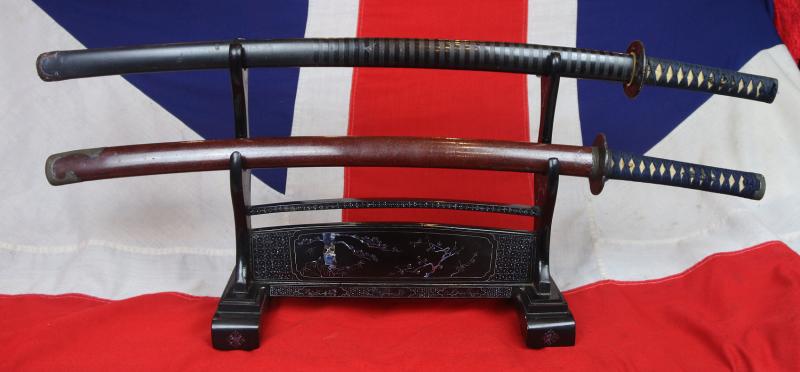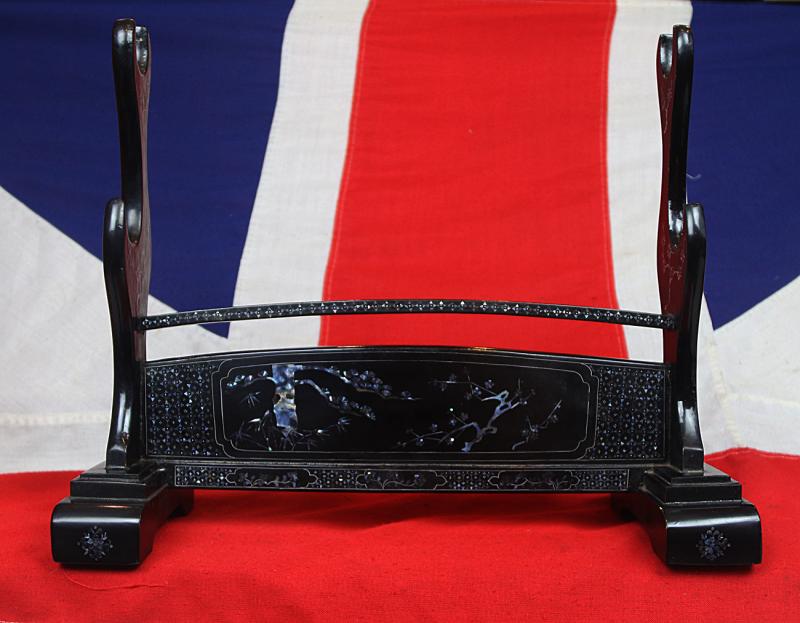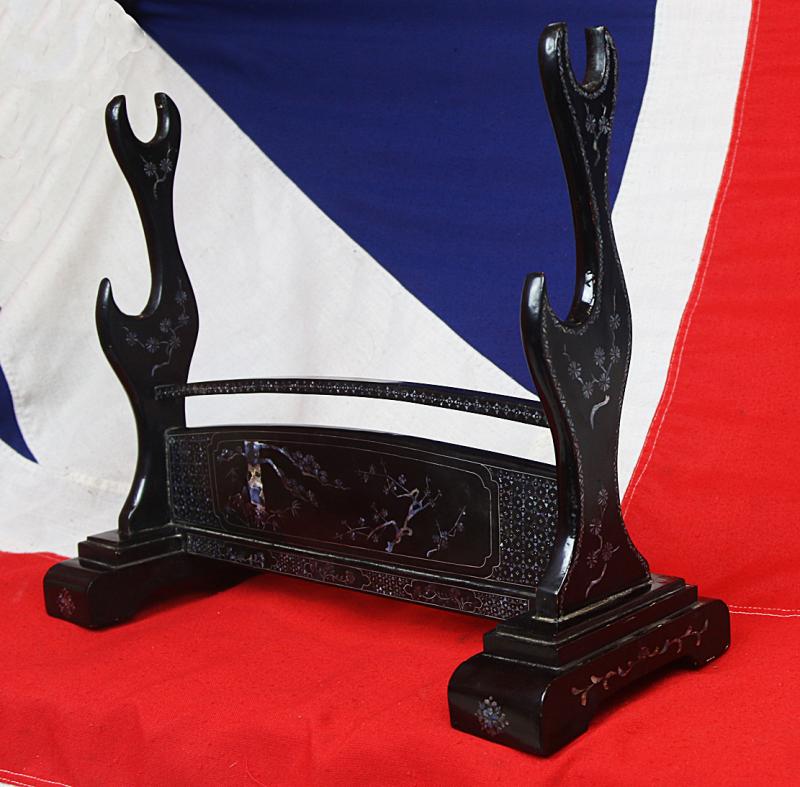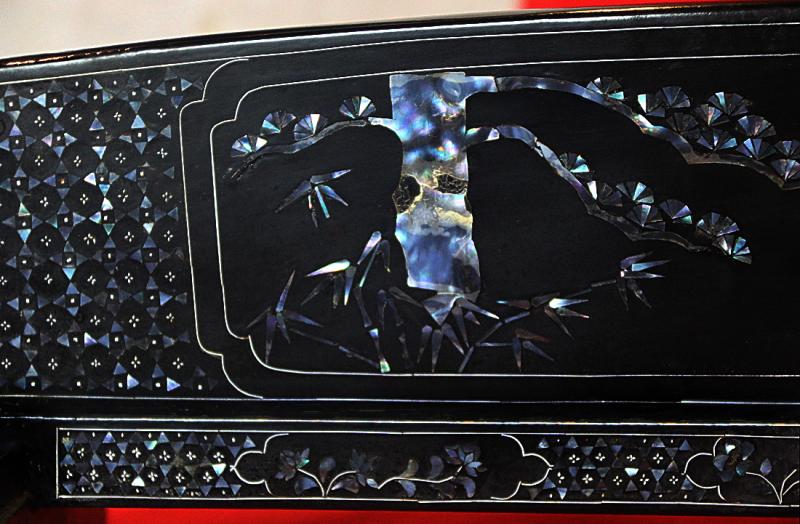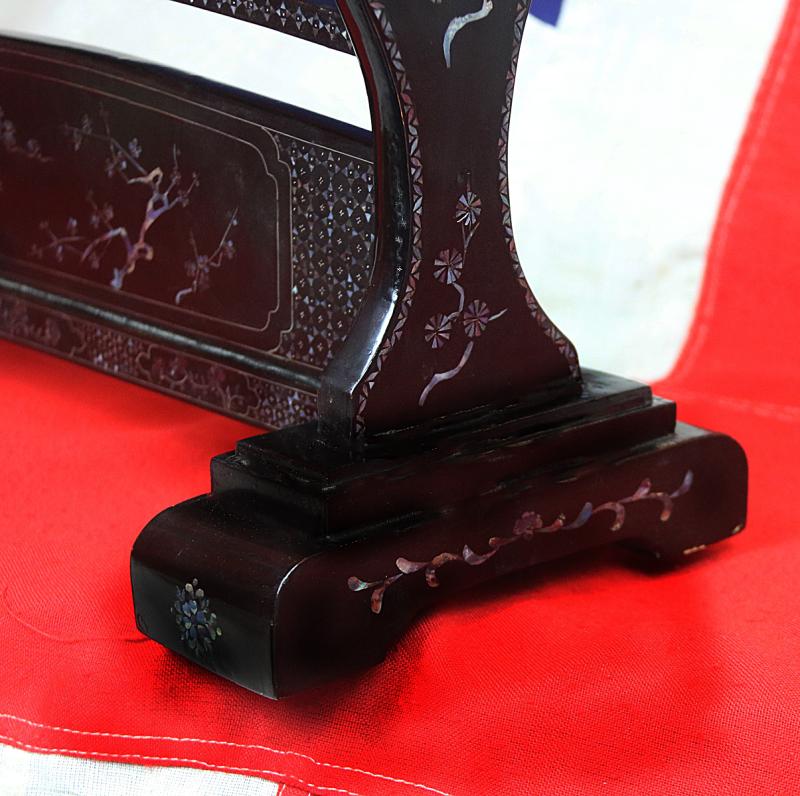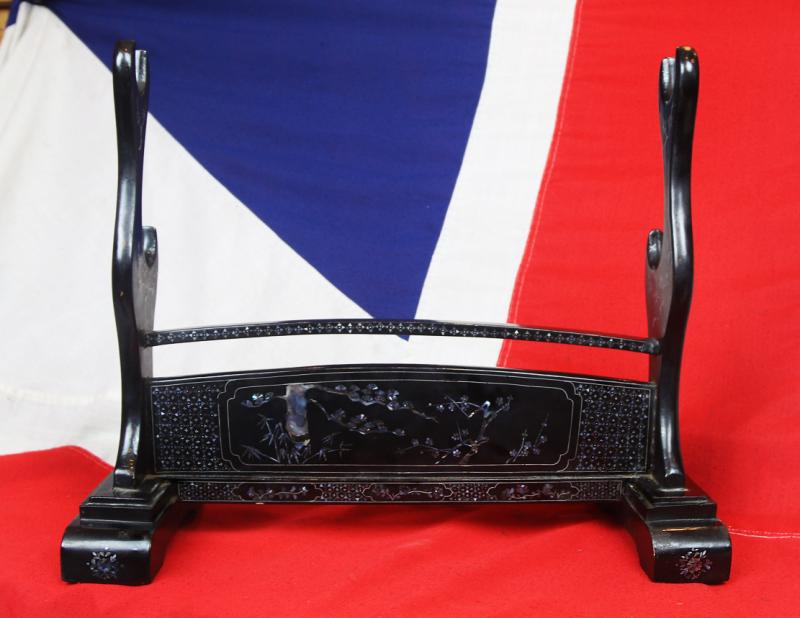A Stunning Original, Antique, Meiji Period, Katanakake, Twin Samurai Sword or Daisho Stand. Inlaid With Incredible Detail, With Abilone Shell
In super condition for age. Finest black urushi lacquer inlaid with hand carved and shaped abilone shell, in a 360 degree decor of prunus trees and bamboo, bordered by geometric patterning, on all four sides. This enables the stand to be set for display in the centre of a room or to one side, or, on a mantle, shrine, or cabinet.
It would have taken many, many, hundreds of hours to make by hand, with such intricate detail, not only to carve every single piece of the abilone shell, to the individual design, but to then set each piece, one after another, within their own pattern and design. An endeavour that would have covered, likely, over a year, or, maybe even two.
The original Edo period urushi lacquer on the stand is in simply excellent condition for age and shows most elegant intricacy, it reveals within that intricacy the finest craftsmanship and beauty worthy of a master of the art of urushi decor. Japanese lacquer, or urushi, is a transformative and highly prized material that has been refined for over 7000 years.
Cherished for its infinite versatility, urushi is a distinctive art form that has spread across all facets of Japanese culture from the tea ceremony to the saya scabbards of samurai swords
Japanese artists created their own style and perfected the art of decorated lacquerware during the 8th century. Japanese lacquer skills reached its peak as early as the twelfth century, at the end of the Heian period (794-1185). This skill was passed on from father to son and from master to apprentice.
The varnish used in Japanese lacquer is made from the sap of the urushi tree, also known as the lacquer tree or the Japanese varnish tree (Rhus vernacifera), which mainly grows in Japan and China, as well as Southeast Asia. Japanese lacquer, 漆 urushi, is made from the sap of the lacquer tree. The tree must be tapped carefully, as in its raw form the liquid is poisonous to the touch, and even breathing in the fumes can be dangerous. But people in Japan have been working with this material for many millennia, so there has been time to refine the technique!
Flowing from incisions made in the bark, the sap, or raw lacquer is a viscous greyish-white juice. The harvesting of the resin can only be done in very small quantities.
Three to five years after being harvested, the resin is treated to make an extremely resistant, honey-textured lacquer. After filtering, homogenization and dehydration, the sap becomes transparent and can be tinted in black, red, yellow, green or brown.
Once applied on an object, lacquer is dried under very precise conditions: a temperature between 25 and 30°C and a humidity level between 75 and 80%. Its harvesting and highly technical processing make urushi an expensive raw material applied in exceptionally fine successive layers, on objects such as bowls or boxes.After heating and filtering, urushi can be applied directly to a solid, usually wooden, base. Pure urushi dries into a transparent film, while the more familiar black and red colours are created by adding minerals to the material. Each layer is left to dry and polished before the next layer is added. This process can be very time-consuming and labor-intensive, which contributes to the desirability, and high costs, of traditionally made lacquer goods. The skills and techniques of Japanese lacquer have been passed down through the generations for many centuries. For four hundred years, the master artisans of Zohiko’s Kyoto workshop have provided refined lacquer articles for the imperial household
One would have to go a long way to find another example quite so beautiful and intricate. Of its type and form this is one of the most beautiful we have seen.
Code: 24544

